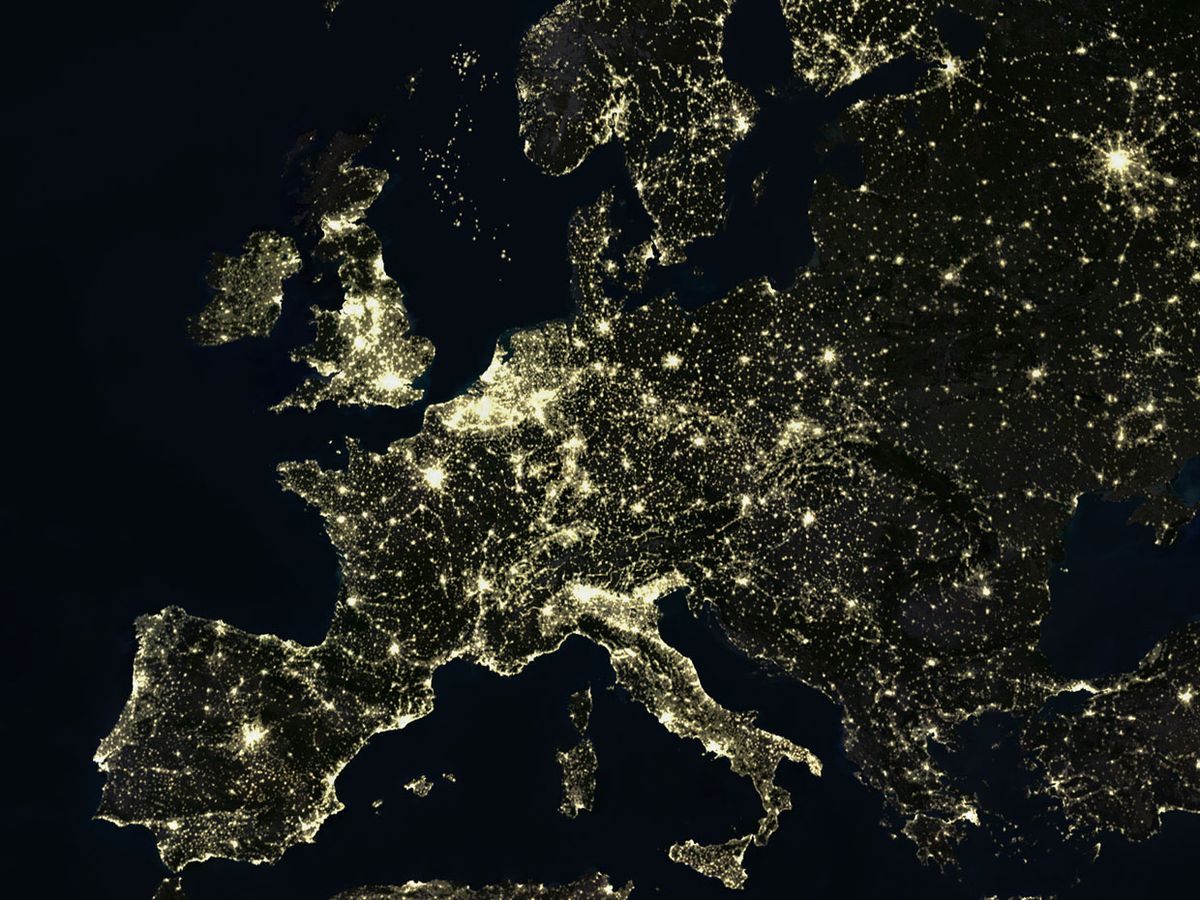Some six decades since Europe began to trade certain goods freely across its borders, electricity is finally joining the common market. In May, 16 countries, accounting for three-quarters of Europe’s power consumption, completed the adoption of a common system for cross-border trading that is now setting wholesale electricity prices from Spain to Finland and from the United Kingdom to Austria.
Integrating the world’s largest synchronized power grid is possible because of a sophisticated optimization algorithm for Europe’s day-ahead power markets—the Pan-European Hybrid Electricity Market Integration Algorithm, or Euphemia. This algorithm crunches every buy and sell bid submitted to the participating national and regional power markets. It simultaneously allocates rights to transborder transmission and sets the power prices for each market, outputting a selection of trades for the following day.
Euphemia’s goal is to maximize what economists call the “social welfare” of the region by maximizing the use of its most efficient power supplies and thus minimizing overall costs to consumers. “Where there are price differentials in neighboring markets, the process is designed to make sure there’s full use of the transmission paths between them,” says Mark Bartholomew, an energy market specialist with the Birmingham, England–based law firm SGH Martineau, which helped bring U.K. transmission operator National Grid into the scheme.
A consortium of power exchanges and transmission operators began building Euphemia in 2011. The optimization scheme is based on one implemented in 2010 to link the markets of Belgium, France, Germany, Luxembourg, and the Netherlands. Features were added to meet the unique requirements of new markets such as Spain, the U.K., and the Nordic countries. For example, Euphemia can enforce limits on how quickly power levels change on Scandinavian grids, in order to moderate frequency variation there.
Euphemia was built to meet the European Commission’s goal of unifying all of Europe’s power markets by 2015, and that unified market has huge growth potential. Just 11.5 percent of the 3,355 terawatt-hours of energy consumed in Europe last year crossed borders.
Euphemia should help boost trading volume. Under the old system, parties wishing to trade internationally had to seek out exchanges. And executing trades required separate transactions for energy and for transmission, so traders had to bid for power before securing the means to move it (or vice versa). Euphemia cuts through the complexity by pairing bids with international counterparts as its software sees fit. “The traders just buy and sell on their national exchanges in the regular way, and all of the cross-border things happen automatically,” says Bartholomew.
The EC’s vision is for this common system to absorb more markets until it covers all of Europe’s cross-border trading. However, some countries concerned about the efficiency and safety of the system are holding out for upgrades that take better account of the physics of the transmission grid.
The problem is that real power flows pay no heed to markets and national borders. Consider Poland’s dilemma. North-south flows within Germany and between Germany and Austria loop out across the Polish border and overload Poland’s lines. The problem can extend onto other grids such as the Czech Republic’s, and it’s especially severe when Germany’s northern wind farms are running full tilt.
Germany is planning internal high-voltage direct current (HVDC) lines whose controllability will help keep its flows on course [see “Germany Jump-starts the Supergrid,” IEEE Spectrum, May 2013]. Regional transmission operators have also collaborated to use existing HVDC lines to combat the flows. Danish and Swedish operators help by using a pair of HVDC lines to push power clockwise around the Baltic Sea, an electrical twist that has the effect of pulling German power away from the Polish frontier.
Robert Poprocki, deputy director at the Warsaw-based PSE Operator, says this Baltic HVDC redispatching scheme pushed more than 120 gigawatt-hours of electricity around the Baltic last year, but it has not completely solved the problem. Still, the trick consumes no power and the benefits are cost-effective, says Poprocki.
PSE postponed the linking of its market with Germany and Austria over concerns that this would exacerbate the flows. But in April, the eastern European countries relented after gaining assurances from Germany and Austria that commercial power exchanges would be limited in some way to safeguard PSE’s grid.
Transmission experts say a more radical reengineering of power markets will ultimately be needed, one that pays less heed to national borders. “Today the borders are drawn at the wrong places,” says Alexander Wirth, a transmission expert with Swissgrid and operational manager of the Transmission System Operator Security Cooperation initiative.
Rather than trading between countries, Wirth and other experts say, optimization schemes such as Euphemia should manage trading across the system’s real transmission constraints. “Only 2 percent of congestion is located at borders,” says Wirth.
Such a system implemented today would likely cut Germany in half and merge its halves with neighboring countries. It is also beyond what European states are ready to consider, Wirth says. That could take another decade. In the meantime, grid operators can look forward to same-day trades. Those will likely start testing by October.
This article originally appeared in print as “An Algorithm Unites Europe’s Electrical Fiefdoms.”
Peter Fairley has been tracking energy technologies and their environmental implications globally for over two decades, charting engineering and policy innovations that could slash dependence on fossil fuels and the political forces fighting them. He has been a contributing editor with IEEE Spectrum since 2003.



